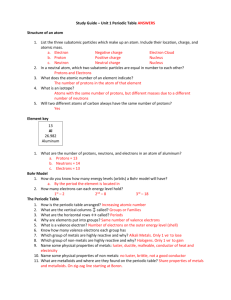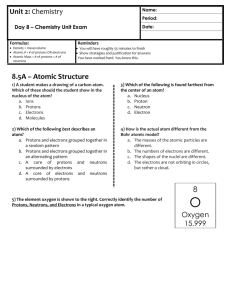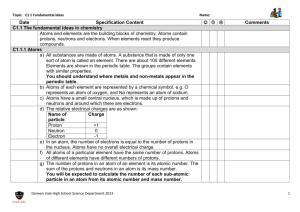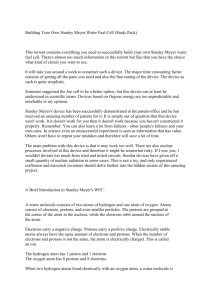Chapter Two - BryannaTSniadecki
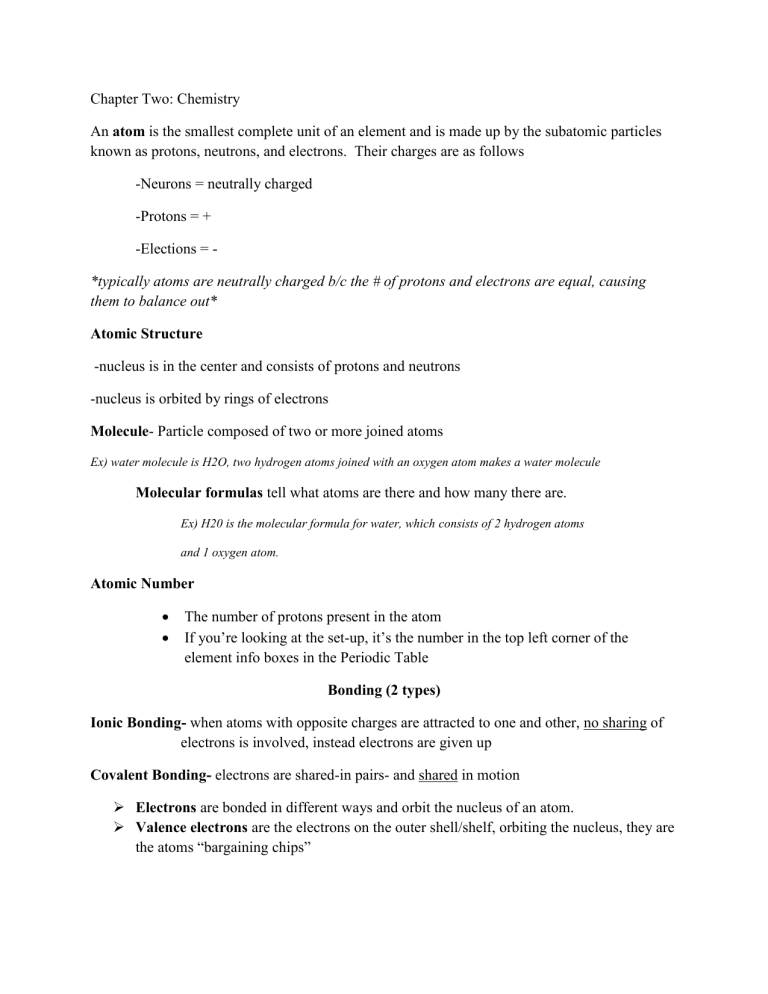
Chapter Two: Chemistry
An atom is the smallest complete unit of an element and is made up by the subatomic particles known as protons, neutrons, and electrons. Their charges are as follows
-Neurons = neutrally charged
-Protons = +
-Elections = -
*typically atoms are neutrally charged b/c the # of protons and electrons are equal, causing them to balance out*
Atomic Structure
-nucleus is in the center and consists of protons and neutrons
-nucleus is orbited by rings of electrons
Molecule - Particle composed of two or more joined atoms
Ex) water molecule is H2O, two hydrogen atoms joined with an oxygen atom makes a water molecule
Molecular formulas tell what atoms are there and how many there are.
Ex) H20 is the molecular formula for water, which consists of 2 hydrogen atoms and 1 oxygen atom.
Atomic Number
The number of protons present in the atom
If you’re looking at the set-up, it’s the number in the top left corner of the element info boxes in the Periodic Table
Bonding (2 types)
Ionic Bonding- when atoms with opposite charges are attracted to one and other, no sharing of electrons is involved, instead electrons are given up
Covalent Bonding- electrons are shared-in pairs- and shared in motion
Electrons are bonded in different ways and orbit the nucleus of an atom.
Valence electrons are the electrons on the outer shell/shelf, orbiting the nucleus, they are the atoms “bargaining chips”
Isotopes- an atom that has the same number of protons as other atoms of an element , but a different number of neurons
Ex) Carbon 12, carbon 14, all carbon, but different types b/c each one differs in the number of neurons present
Ions- an electrically charged atom or molecule.
-they are formed when an atom gains or loses an electron
Ex) I lost an electron….Are you sure?....I’m positive!!!!!!!!!!!!!!!!!!!!!!!!! (: pH Scale:
Strong Acid Neutral Strong Base
---l-------------------------------------------------l---------------------------------------------l-----
1 7 12
*the body wants to keep things at a neutral pH of 7 to maintain homeostasis *
Acid vs. Base:
Acid- o Feels life water o pH less than 7 o sour o releases H+
Base- o slippery o pH more than 7 o bitter o contains OH-
Organic Compounds (must contain both Carbon & Hydrogen) Include:
-carbohydrates
– provide energy and structural materials for cells, contain C, H, and are broken up into the categories of monosaccharide, disaccharide, and polysaccharide. An example of a carb is a starch.
-lipids – store energy, insulate, provide shock absorption, compose cell membranes, help with stability, and compose some hormones. 3 types (triglyceride, phospholipid, and steroid) and an example of a lipid is cholesterol.
-proteins
– composes enzymes, structural material, energy source, compose antibodies, act as receptor cells. A type is a polypeptide chain made up of many different combos of amino acids.
-nucleic acids – building blocks are known as nucleotides (each nucleotide contains a sugar, phosphate, and base) They are key components in DNA and protein synthesis
Amino acids are the building blocks of proteins, there are 20 different types and they are held together by very weak H-bonds
Monosaccharide’s
are simple sugars such as glucose
Monomer is molecule that can be bonded to other identical molecules to form a polymer.
Starches/Simple Sugars:
-they break down quickly b/c they have shorter chains, while complex carbs take longer to break down b/c they have longer chains
Ex) candy before a big game vs. a Pasta Party before a big game








